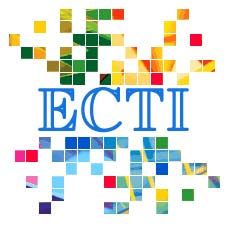Data Mining to Recognize Fail Parts in Manufacturing Process
Main Article Content
Abstract
In many manufacturing processes, some key process parameters have very strong relationship with the normal or various faulty products of finished products. The abnormal changes of these process parameters could result in various categories of faulty products. In this paper, a data mining model is developed for on-line intelligent monitoring and diagnosis of the manufacturing processes. In the proposed model, an Apriori learning rules developed for monitoring the manufacturing process and recognizing faulty quality of the products being produced. In addition, this algorithm is developed to discover the causal relationship between manufacturing parameters and product quality. These extracted rules are applied for diagnosis of the manufacturing process; provide guidelines on improving the product quality. Therefore, the data mining system provides abnormal warnings, reveals assignable cause(s), and helps operators optimally set the process parameters. The proposed model is successfully applied to an assembly line in hard disk drive process, which improves the product quality and saves manufacturing cost.
Article Details
This journal provides immediate open access to its content on the principle that making research freely available to the public supports a greater global exchange of knowledge.
- Creative Commons Copyright License
The journal allows readers to download and share all published articles as long as they properly cite such articles; however, they cannot change them or use them commercially. This is classified as CC BY-NC-ND for the creative commons license.
- Retention of Copyright and Publishing Rights
The journal allows the authors of the published articles to hold copyrights and publishing rights without restrictions.
References
[2] Agrawal, R., &Srikant, R., "Fast algorithm for mining association rules," In: ACM VLDB Conference, September 1994, pp. 487-499, 1994.
[3] Bishop, C.M., Neural Networks for Pattern Recognition, Oxford University Press, 1995.
[4] Brin, S., Motwani, R., Ullman, J. D., & Tsur, S., "Dynamic itemset counting and implication rules for market basket data," In: ACMSIGMOD Conference, Tucson, Arizona, USA, pp. 255-264, 1997.
[5] Catledge, L. D.,& Pitkow, J. E., "Characterizing browsing strategies in the WorldWideWeb," In: Proceedings of Third WWW Conference, April 1995.
[6] Cheeseman, P., & Stutz, J., Bayesian classification (AutoClass): theory and results. In U.M. Fayyad, G. Piatetsky-Shaprio, P. Smyth, &R. Uthurusamy (Eds.), Advances in knowledge discovery and data mining (pp. 153-180). AAAI/MIT Press, pp.153-180, 1996.
[7] Choi, D. H., Ahn, B. S., & Kim, S. H., Prioritization of association rules in data mining: multiple criteria decision approach. Expert Systems with Applications, 29(4), pp. 876-878, 2005.
[8] Guh, R.S. "A hybrid learning-based model for on-line detection and analysis of control chart patterns," Computers & Industrial Engineering, Vol. 49, pp. 35-62, 2005.
[9] Han, J., & Kamber, M. Data mining: concepts and techniques, Los Altos, CA: Morgan Kaufmann, 2001.
[10] Karabatak, M., Seng?r, A., Ince, M. C., & ve TÄurkoglu, I. Association rules for texture classification, IMS, 2006.
[11] Rushing, J. A., Ranganath, H. S., Hinke, T. H., & Graves, S. J. "Image segmentation using association rule features," IEEE Transactions on Image Processing, Vol. 11, pp. 558-566, 2002.
[12] Tan, P. N., & Kumar, V. "Interestingness measures for association patterns: A perspective," KDD 2000 workshop on post-processing in machine learning and data mining, Boston, MA, August, 2000.
[13] Wang, C.H, Kuo,W., Qi, H.R. "An integrated approach for process monitoring using wavelet analysis and competitive neural network," International Journal of Production Research, Vol. 45, pp. 227-244, 2007.
[14] Webb, G. I., & Zhang, S. "K-optimal rule discovery," Data Mining and Knowledge Discovery, Vol. 10(1), pp. 39-79, 2005.
[15] Wur, S. Y., & Leu, Y. "An effective Boolean algorithm for mining association rules in large databases," In: International Conference on Database Systems for Advanced Applications (DASFAA '99), Hsinchu, Taiwan, 1999.
[16] Zhang, T., Ramakrishnan, R., & Livny, M. "BIRCH: an e±cient data clustering method for very large databases," In: ACM SIGMOD International Conference Management of Data, Montreal, Canada, pp.103-114, 1996.


